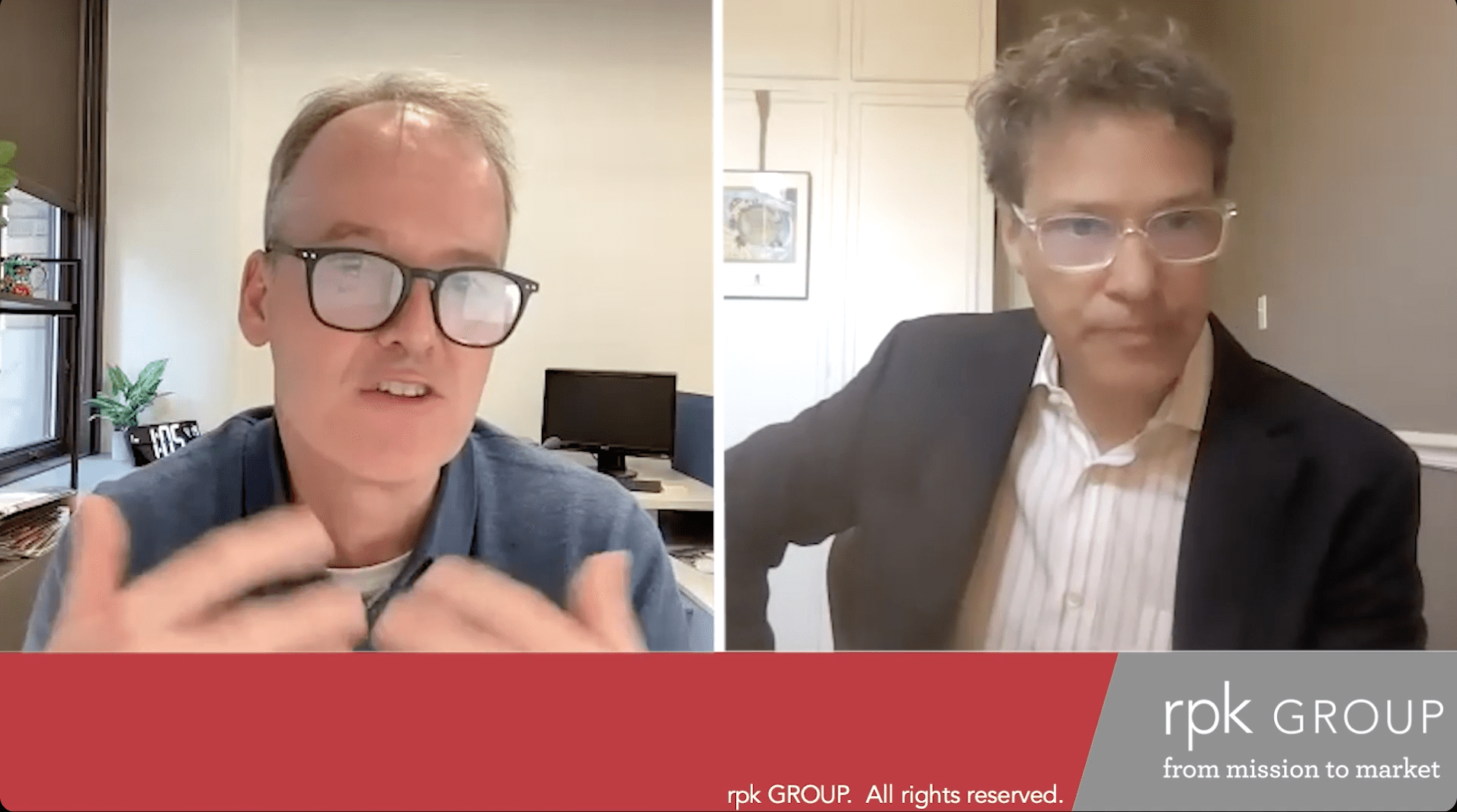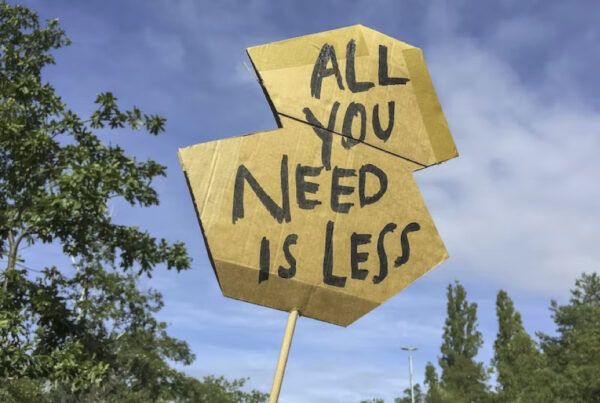John McIntosh, managing partner at SeaChange, joined Rick Staisloff for the April 2023 Wednesday Webinar to discuss higher education’s arrival at strategic partnerships. SeaChange helps nonprofits apply quantitative approaches to current challenges, including grantmaking and support for mergers and sustained collaboration.
They explored various questions, including:
- Why is higher education historically been reluctant to consider strategic partnerships?
- What are some of the common factors behind successful partnerships?
- And how might leadership begin a conversation around this topic?
Below are highlights from this in-depth discussion; you can also check out the full webinar recording. Note: This interview has been edited for length and clarity.
Rick: John, SeaChange has put a stake in the ground around supporting strategic partnerships. Talk to me about the role SeaChange has taken on and how that work is unfolding.
John: I never thought we’d work in higher education, but institutions started to call. I realized that there are a lot of schools out there and that some of them are going to face complicated times. Higher ed seems to believe it’s different from other types of nonprofits, but they all can potentially benefit from exploring various forms of partnerships to carry their missions forward.
Rick: It’s curious that higher ed has come to the strategic partnership party so late. Do you think it’s been critical to have third parties contributing to normalizing this discussion?
John: Every institution needs help, and I haven’t seen very many situations where the institutions can do it completely on their own. I view SeaChange as a resource that creates a safe space for discussion by being a source of grants. Sometimes institutions need help figuring out what kind of help they need. Most times, we serve as sort of a catalyst for a conversation on why change is necessary, or at least worth exploring. Outsiders can’t force the change. But they can be an ally to those on the inside who are trying to get things done.
I’ve never seen anything close up in my professional career that is as difficult as navigating an institution of higher education through the exploration or completion of a merger. There are just so many constituents. That, to me, is what makes it complicated. So I think the role of outsiders is not to try to impose change on institutions, but to help those that want to change to make that easier in all sorts of ways.
Rick: Ah. The ‘messy human beings’ part of change. Our topic emphasizes an arrival at strategic partnerships. Has higher ed finally arrived at strategic partnerships being a thing we at least ought to be entertaining? And if so, why?
John: The most obvious thing driving discussions is the sense that the status quo is not ideal, or in some cases, maybe not even sustainable. But I don’t think it’s been a sea change (excuse the pun) in the issues—institutions are being buffeted by the same long-standing forces.
Rick: In particular, we’re seeing more institutions trying to get their FY 24 budgets together, and it’s just not working.
John: Right. So, the pressures are real. It’s very seldom that institutions do a hard thing like explore mergers just for the hell of it, where you have two institutions that think things are fine, as far as the eye can see, and say “Let’s explore coming together.”
Rick: If you were just to look at the numbers, I don’t think you’d say we’ve arrived because it’s still very few institutions engaging in these strategic partnerships. That said, I do anticipate over the coming years we will see an uptick in the numbers. And I think for me, arrival points back to something that you said, which is more of the normalization. It’s now an OK conversation to have. Maybe even a required conversation. Meaning if you’re a board, you’re expecting your senior team to be having these conversations.
I think the other piece that’s shifting is that institutions are seeing that this approach is not bifurcated. Strategic partnership used to mean either continue doing what I’m doing the way I’m doing it, or else just cease to exist. There’s actually this whole continuum of strategic partnership, including creating consortial activities around academic programs or around administrative services, opportunities to come together and create new legal entities, or just sharing assets. There are more options on the table than many people realize.
What’s your insight about whether institutions will increasingly move towards strategic partnerships of their own accord if they need to? Or do they need some kind of nudging or pressure?
John: The underlying energy source for many of these discussions needs to be what’s best for the mission. But that’s an abstract, woolly thing: What is this mission? I think in most cases, that condenses, first and foremost, to what’s the best thing for students. And obviously, in the catastrophic case of a closure, that’s a terrible result for students. For those kids to be stranded in a bad closure is just a moral foul. But even being in institutions that are so consumed with what I’ll call mere survival—those young people don’t get the bargain that they deserve.
Rick: From my perspective, I’ve actually seen a real benefit to external pressure. For example, a legislature saying we’re going to take a hard look at this, and we need to do it by a certain date. For instance, the role the legislature played in Vermont to push the conversation for the consolidation of the four-year state institutions and putting some reward structures out there at the same time.
One observation I have about higher ed is it tends to need use cases; it wants to see what others have done. And when you have a win, then they go, “Oh, look what they did over there. I bet we could do that. Let’s try it!” It normalizes an approach, and you now see a roadmap that you can start to follow. Do you think we need more of those wins first before higher ed will accelerate needed change?
John: I agree with that completely. Think about the impact that the Montclair State University and Bloomfield College merger has had.
Rick: So I think this gets us to a great next question, which is: What kinds of things are you experiencing in your own work that are getting in the way? And what do we do about it?
John: I think the think the biggest single thing that gets in the way is time, from two perspectives: First, that most institutions are short staffed right now. So just who are the people that are going to take the time out of their already busy days to explore this partnership to figure it out? But the biggest issue is that institutions wait too long to start these explorations. In most cases where we’ve seen institutions really struggle, it’s because they started too late.
Rick: So, what’s everyone’s job here?
John: The duty of a board, at least of a not-for-profit board, is to the mission of the organization. It’s not to the institution itself. If the best way to take your mission forward is actually to sell your real estate and become a foundation and make grants instead of doing a residential college, not only would your duty allow you to do that, one could argue it mandates it.
Rick: So I know we don’t want to admire the problem. What are you saying to institutional leaders who are calling you and saying, “Hey, I want to move in this direction”…?
John: In my mind, it all starts with: Is the leadership aware of where they are? Are they going into this in good faith? And is there enough time left to take action?
Rick: I also find that there needs to be an emphasis on keeping it simple at the outset. Just start with: What would an ideal partner look like? What would I need to fill certain gaps that I have? What do I bring to the table as strengths? If you can answer those questions, and the fit feels right, then you can take the deeper dive.
John: I think most people waste a lot of time and money doing detailed work, only then to discover that they’re not going to go forward for reasons they should’ve known much earlier. If you spend six months and a bunch of money exploring something that doesn’t go forward for reasons you could have known, you risk wasting time you may not have. As importantly, you can poison the well for the next conversation that needs to happen.
Rick: As we get to the end of our session today, John, what do you see going forward?
John: I think we’ll witness quite a remarkable transformation over a period of a decade. But not a moment where we’ll say “Aha, it’s happening!” I just don’t see that “aha” moment.
Rick: Thank you, John, for your insights, and certainly for the work you and the team at SeaChange are doing around normalizing this conversation. And I want to thank everybody for joining us today out there in higher ed. Keep doing the good work you’re doing and please join us in the months ahead as we get into more topics through our Wednesday Webinar series.


